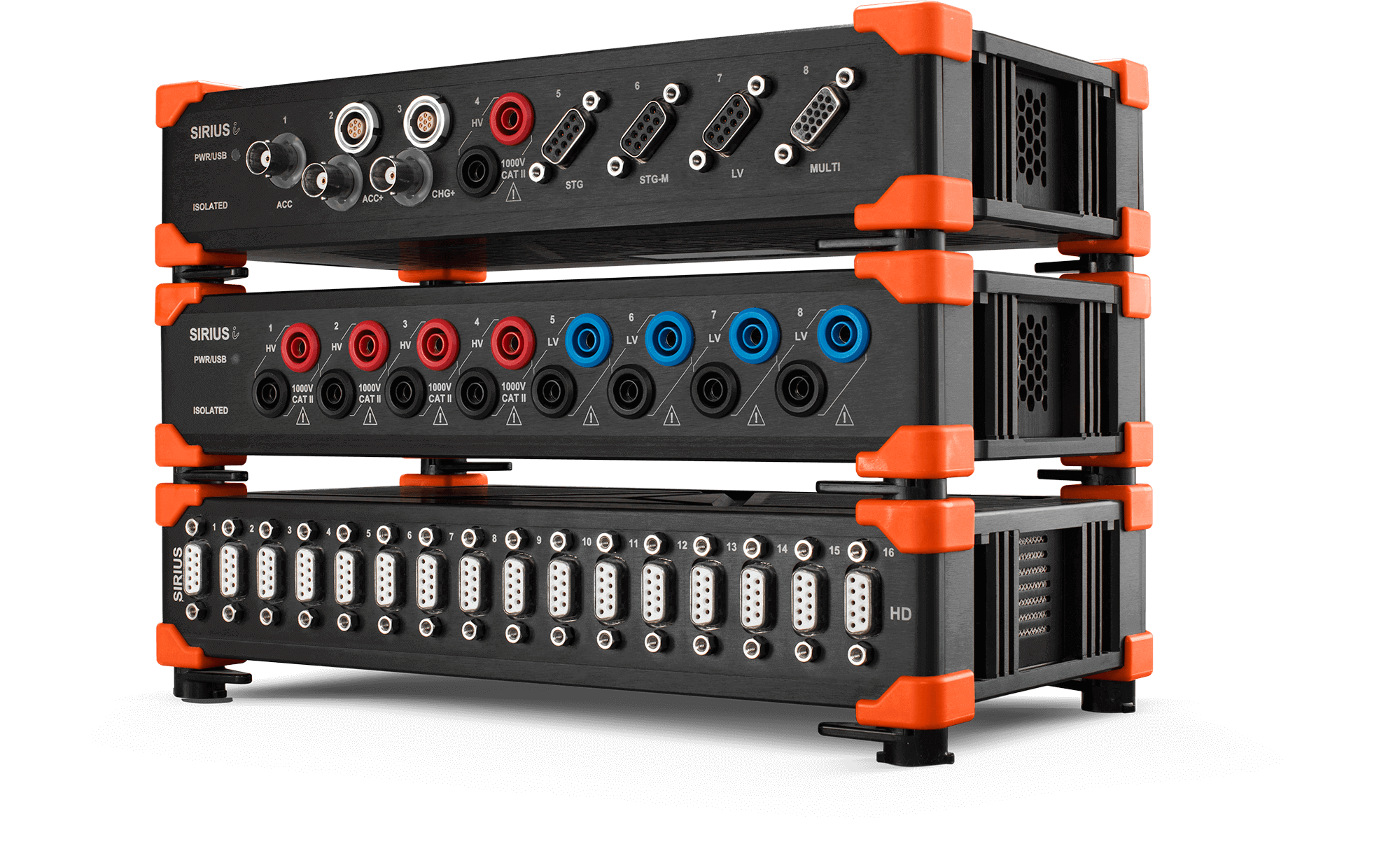Table of contents
Browse categories
Browse authors
 AB
ABAlberto Boffi
 AL
ALAlessia Longo
 AH
AHAl Hoge
 AB
ABAljaž Blažun
 BJ
BJBernard Jerman
 BČ
BČBojan Čontala
 CF
CFCarsten Frederiksen
 CS
CSCarsten Stjernfelt
 DC
DCDaniel Colmenares
 DF
DFDino Florjančič
 EB
EBEmanuele Burgognoni
 EK
EKEva Kalšek
 FB
FBFranck Beranger
 GR
GRGabriele Ribichini
Glacier Chen
 GS
GSGrant Maloy Smith
 HB
HBHelmut Behmüller
 IB
IBIza Burnik
 JO
JOJaka Ogorevc
 JR
JRJake Rosenthal
 JS
JSJernej Sirk
 JM
JMJohn Miller
 KM
KMKarla Yera Morales
 KD
KDKayla Day
 KS
KSKonrad Schweiger
Leslie Wang
 LS
LSLoïc Siret
 LJ
LJLuka Jerman
 MB
MBMarco Behmer
 MR
MRMarco Ribichini
 ML
MLMatic Lebar
 MS
MSMatjaž Strniša
 ME
MEMatthew Engquist
 ME
MEMichael Elmerick
 NP
NPNicolas Phan
 OM
OMOwen Maginity
 PF
PFPatrick Fu
 PR
PRPrimož Rome
 RM
RMRok Mesar
 RS
RSRupert Schwarz
 SA
SASamuele Ardizio
 SK
SKSimon Kodrič
 SG
SGSøren Linnet Gjelstrup
 TH
THThorsten Hartleb
 TV
TVTirin Varghese
 UK
UKUrban Kuhar
Valentino Pagliara
 VS
VSVid Selič
 WK
WKWill Kooiker
What Are the Types of Data Acquisition Systems?

May 29, 2023
In this article we will learn about the different types of Digital Data Acquisition (DAQ) Systems, describing them with enough detail that you will:
See what the major variants of digital DAQ systems are
Learn about how these types differ from each other and why
Understand how they can be used and where

Introduction
There is a wide variety of types of digital data acquisition systems (DAQ) on the market today. They are available in a variety of form factors, speed, sample rate ranges, signal input types, and many other criteria. DAQ systems cover a very broad range of measurement applications or acquiring and sampling electrical signals, from general-purpose to very specific, which further influences their designs.
Although the focus of this article is on Digital data acquisition systems, there are other kinds of data recorders to mention:
Digital Data Acquisition
Data Loggers
Data Recorders
Signal Conditioners
Oscilloscopes
Spectrum Analyzers
Vibration Analyzers
Data acquisition system types
We can sort digital data acquisition systems types according to several important criteria:
Data Acquisition Systems by Form Factor: From small computer-connected modules to stand-alone systems.
Data acquisition systems by Distributability: Modularity and interoperability of acquisition nodes.
Data acquisition systems by Speed: How fast they can sample data.
Data acquisition systems by IP Environmental Protection: The ability to withstand shock, vibration, dust, water, and temperature extremes.
Data acquisition systems by Control Capabilities: The ability to integrate with real-time control systems.
All data acquisition system types mentioned below offer signal conditioning amplifiers (i.e. signal conditioning circuitry) for sampling and collecting data from all sorts of analog signals and analog sensors such as strain gauge, IEPE, thermocouple, RTD, LVDT, voltage, current, etc.
Learn more about data acquisition systems:
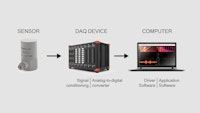
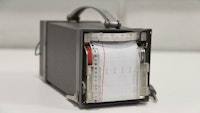
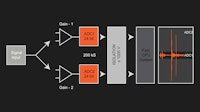
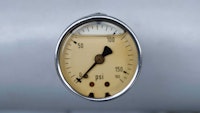
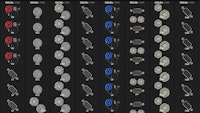
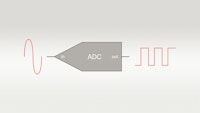
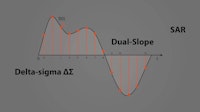
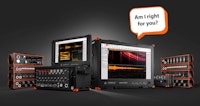
Data acquisition systems by form factor
One of the most useful ways to sort the wide range of DAQ systems on the market today is by form factor. DAQ hardware is available in a wide variety of sizes, from those you can hold in your hand to benchtop systems and multi-chassis rack-mounting systems. As you would expect, the smallest systems have fewer channels than larger ones.
DAQ systems are available in a variety of form factors, including:
Computer-connected DAQ Modules
Stand-alone Data Acquisition Systems (also called Portable data acquisition systems with a built-in computer)
Rack-mounting Data Acquisition Systems
Computer-connected data acquisition modules
DAQ systems that connect to the user’s computer are generally less expensive than those with built-in computers. They can also be smaller and lighter by virtue of not having a computer and its related peripherals, such as one or more hard drives, a keyboard, and a display, for example.
Dewesoft makes several popular computer-connected DAQ modules:
| Series | Image | Interface to PC | Top Sample Rate/ch | Features |
| SIRIUS |
|
USB 2.0 EtherCAT |
200 kS/s or 1 MS/s | Small, with top-performance signal conditioning, EtherCAT, and USB output. 8 or 16 channels per slice and 1 CAN bus input. |
| SIRIUS Waterproof | 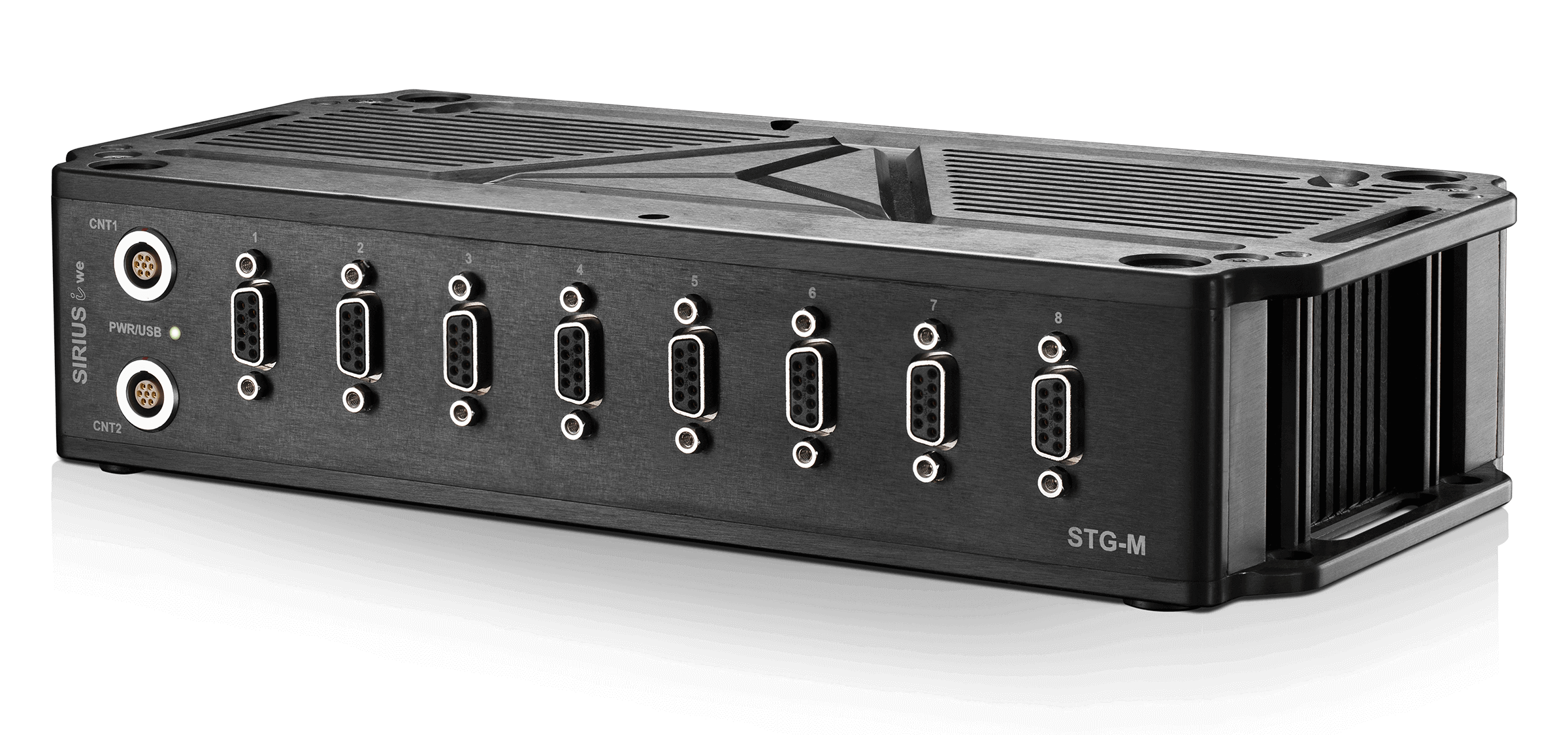 |
USB 2.0 EtherCAT |
200 kS/s | Waterproof IP67 DAQ devices with top-performance signal conditioning, EtherCAT, and USB output. Available in 8 or 16 analog channels with optional encoder inputs. |
| SIRIUS XHS |  |
USB 3.0 GLAN |
15 MS/s | High-speed and high-bandwidth DAQ system. Available in 8-channel configuration. |
| DEWE-43A | 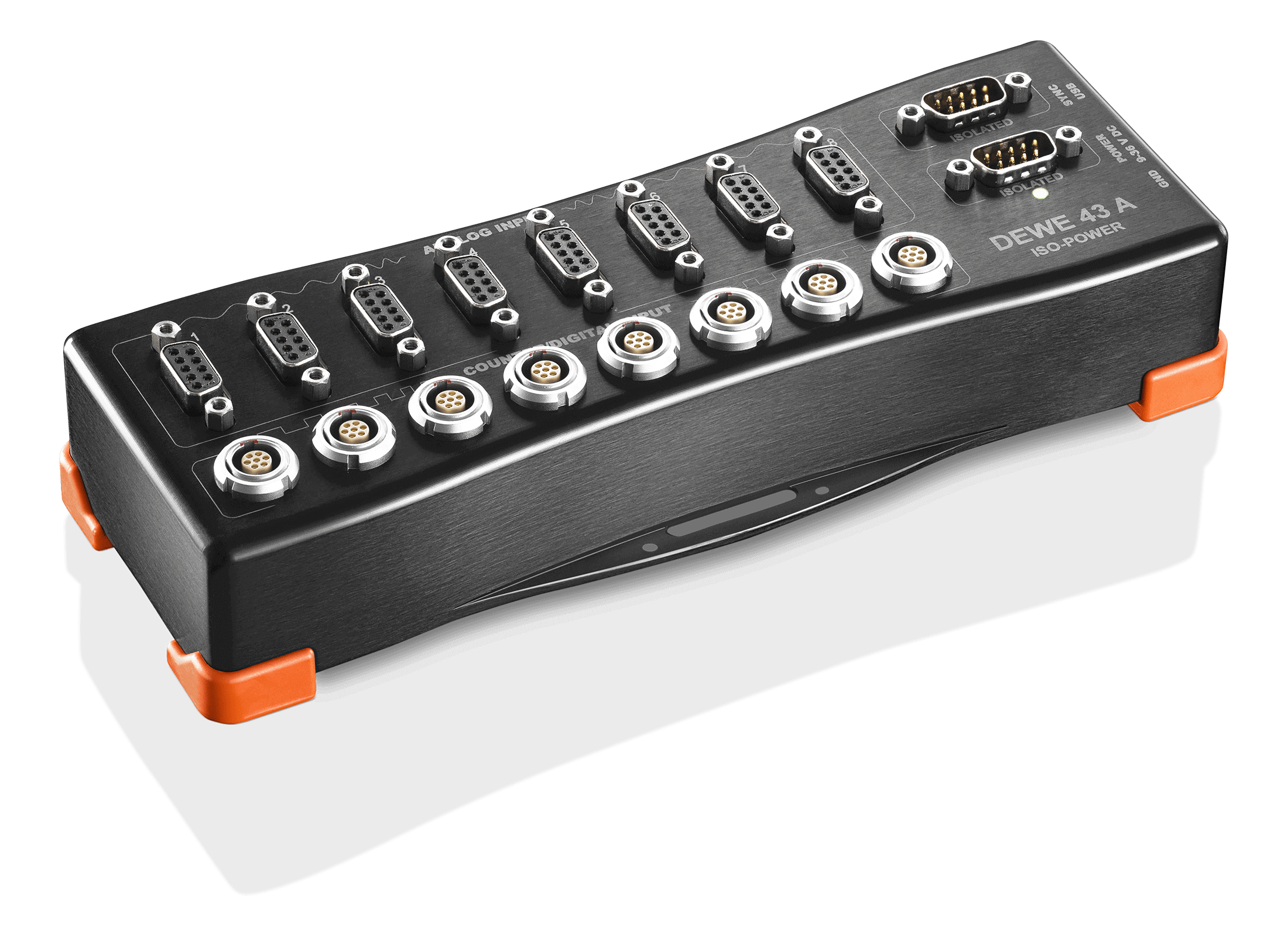 |
USB 2.0 | 200 kS/s | Handheld, 8 universal analog inputs, 8 counters, 2 CAN bus interfaces. |
| SIRIUS Mini | 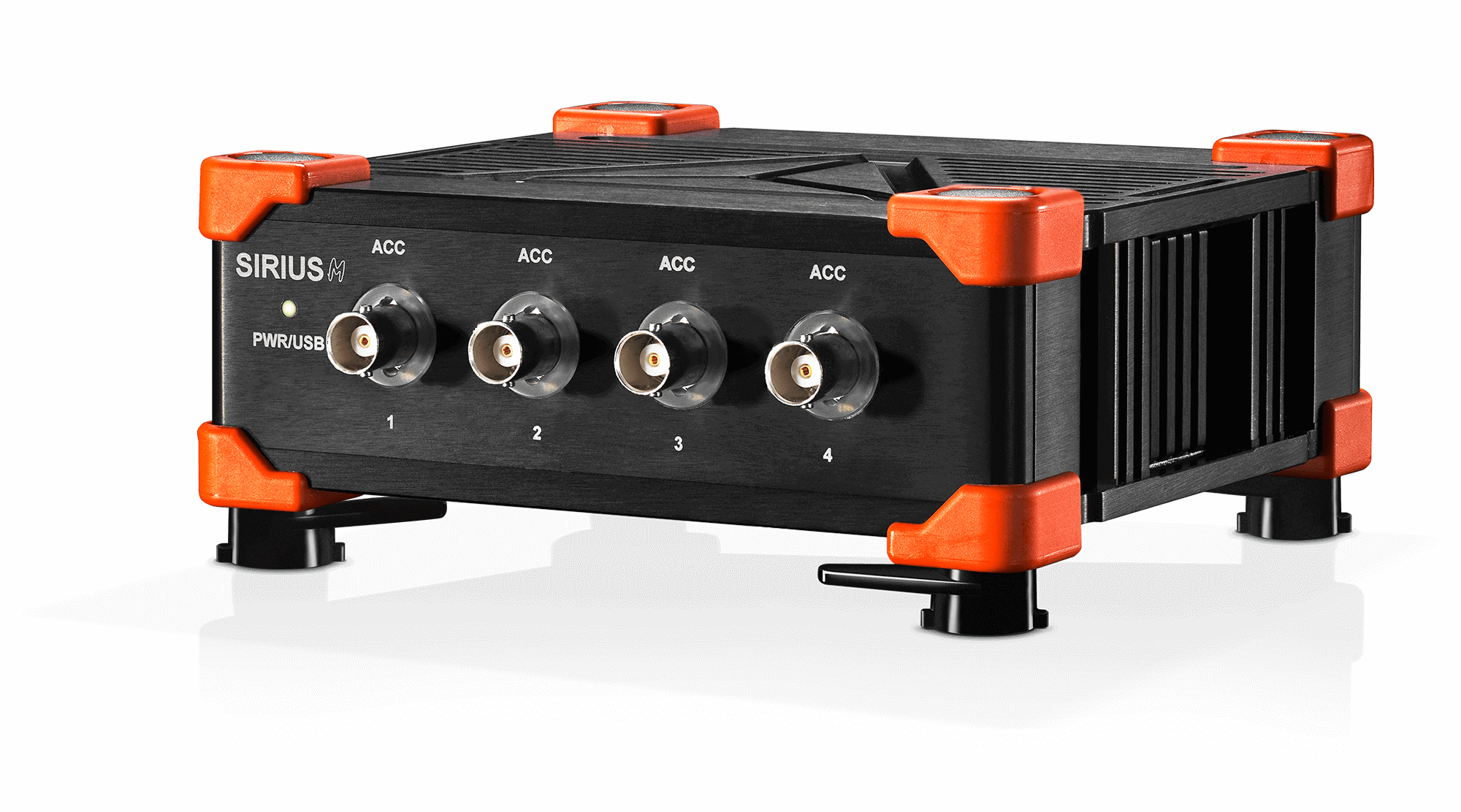 |
USB 2.0 | 200 kS/s | Very small, USB-powered, 4-channel IEPE, and voltage data acquisition system. |
| SIRIUS R2/R4 HUB | 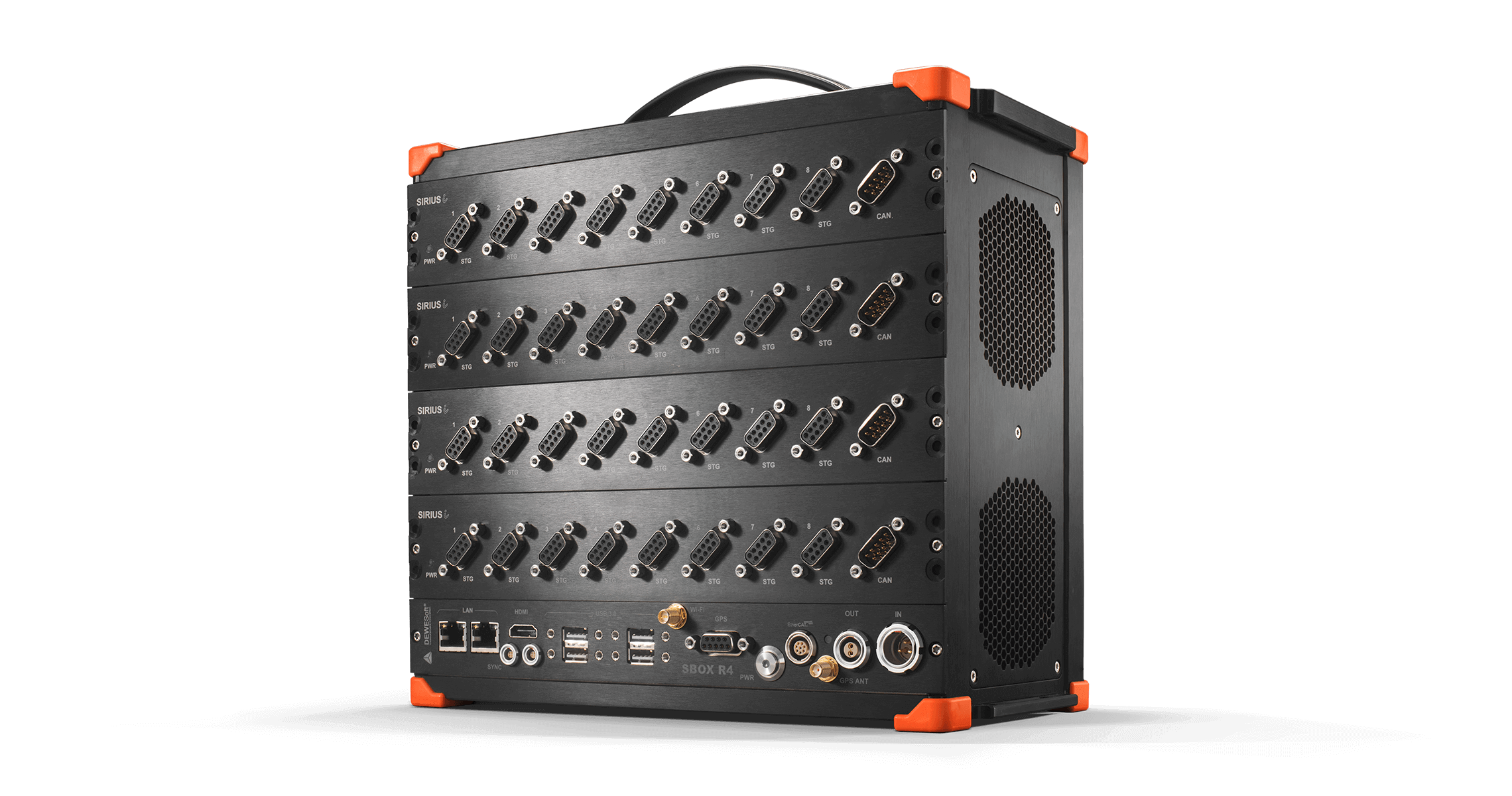 |
USB 2.0 | 200 kS/s or 1 MS/s | Benchtop DAQ system that accepts up to four SIRIUS signal conditioning slices for a total of up to 64 analog channels, 32 encoder channels, and up to 18 CAN bus channels. |
| IOLITE Rack |  |
EtherCAT | 20 kS/s analog / 40 kS/s digital inputs | Benchtop and rack-mounting data acquisition system configurable with up to 12 IOLITE signal conditioning cards and real-time data output. |
| IOLITE modular | 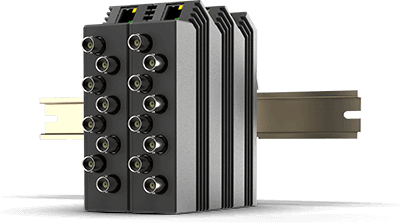 |
EtherCAT | 40 kS/s | Tiny single- and multi-channel, distributable EtherCAT data acquisition modules for industrial use. |
| KRYPTON |  |
EtherCAT | 20 kS/s analog / 40 kS/s digital inputs | Rugged single-channel and multi-channel DAQ modules. For testing in an extreme environment. |
Each of these DAQ system models connects to a host PC computer using a USB, EtherCAT, or GLAN (Ethernet) data interface. The host computer needs to run DewesoftX data acquisition software which is included for FREE with all Dewesoft DAQ hardware.
Stand-alone or portable data acquisition systems
When a computer is added to a DAQ device, it becomes a stand-alone data acquisition system, meaning that it does not require any additional hardware to perform data recording and analysis as a data acquisition system. These systems usually also have built-in displays and keyboards, although these elements can be connected externally as well. Internal data storage is always included.
Dewesoft makes several popular stand-alone or all-in-one data acquisition systems:
| Series | Image | Top Sample Rate/ch | Max Channel Count | Features |
| MINITAURs | 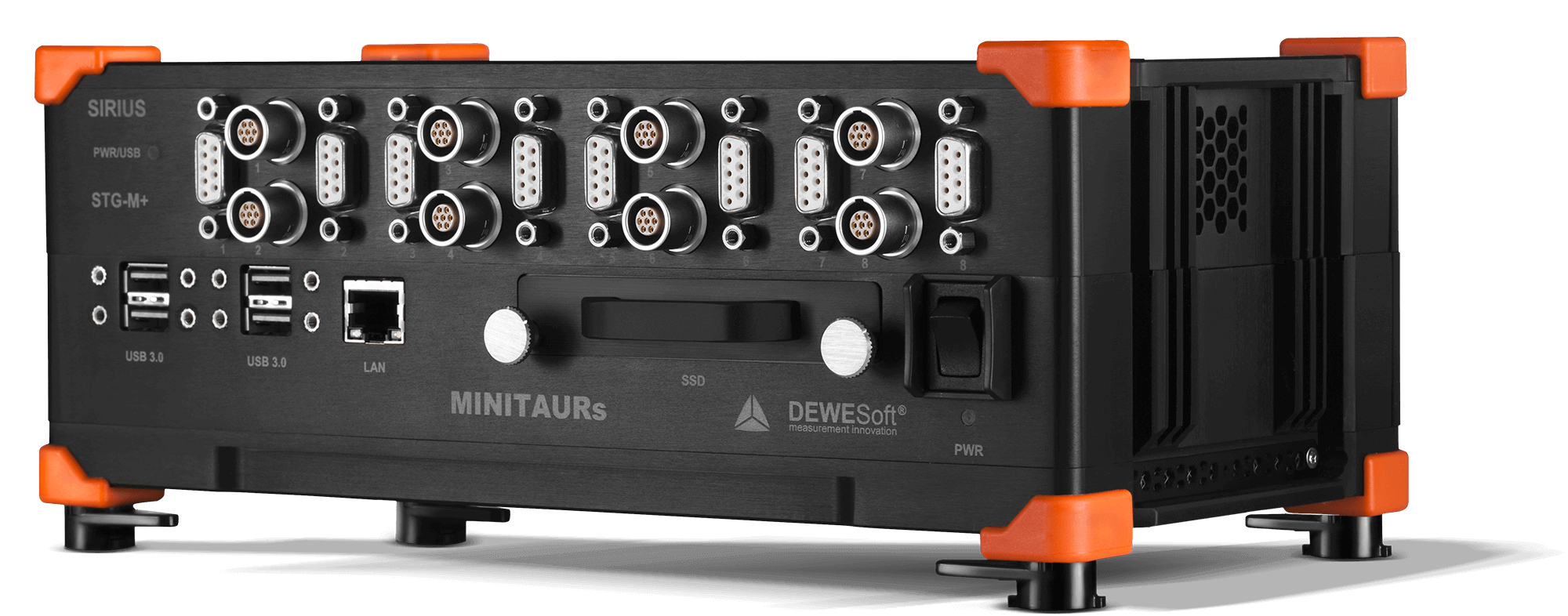 |
200 kS/s | 8 analog 8 counter/encoder 24 digital 1 CAN bus |
Very small stand-alone system. The display and keyboard are available as separate options. |
| SIRIUS R1DB/R2DB | 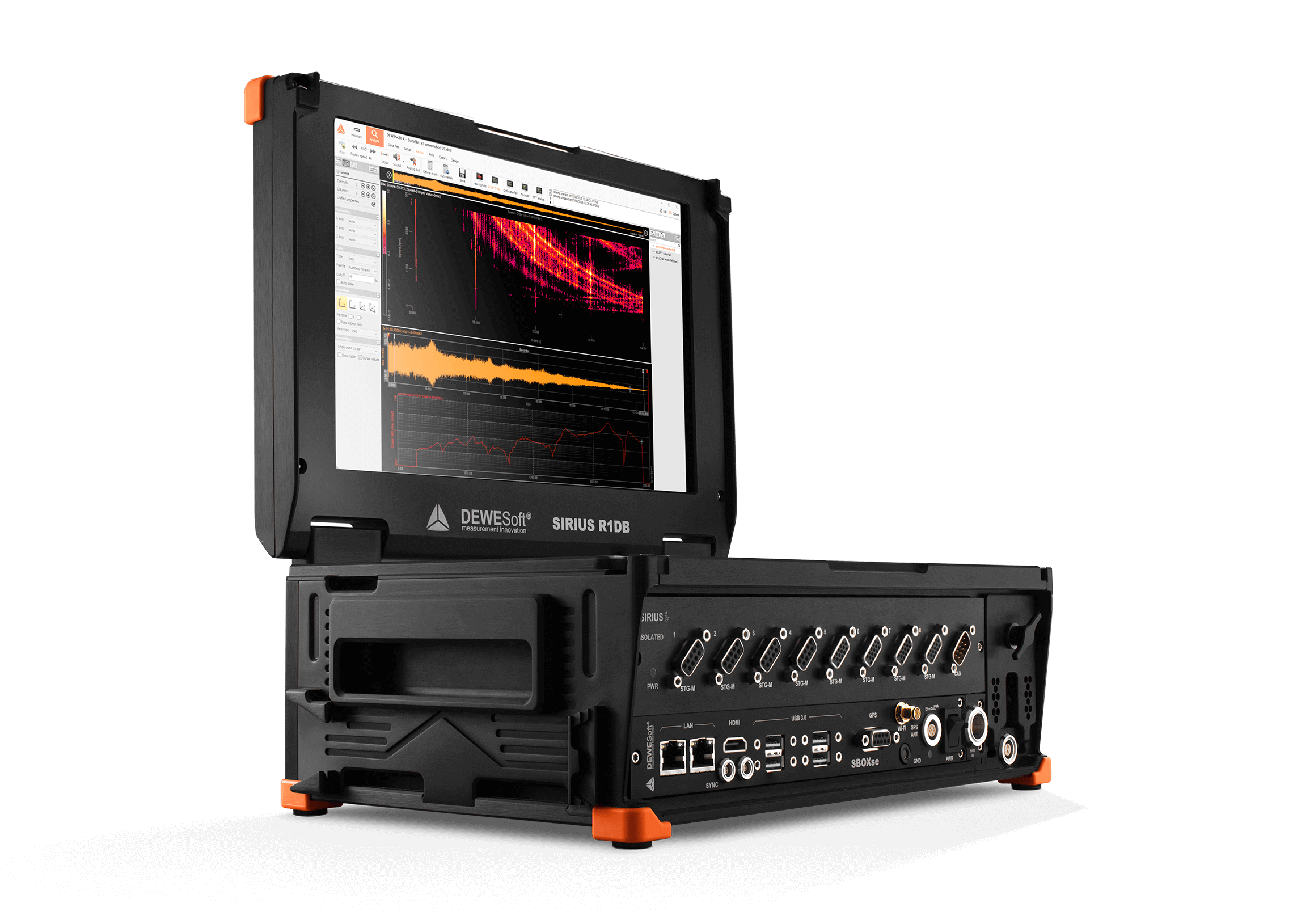 |
200 kS/s or 1 MS/s | 32 analog in 16 counters 48 digital 18 CAN bus |
Portable data acquisition systems, configurable with up to two SIRIUS signal conditioning slices. Built-in display, keyboard, and batteries. |
| SIRIUS R2/R4 |  |
200 kS/s or 1 MS/s | 64 analog in 32 counters 92 digital 36 CAN bus 32 analog out |
Benchtop unit, configurable with 4 SIRIUS signal conditioning cards. The display and keyboard are separate. |
| SIRIUS R8 | 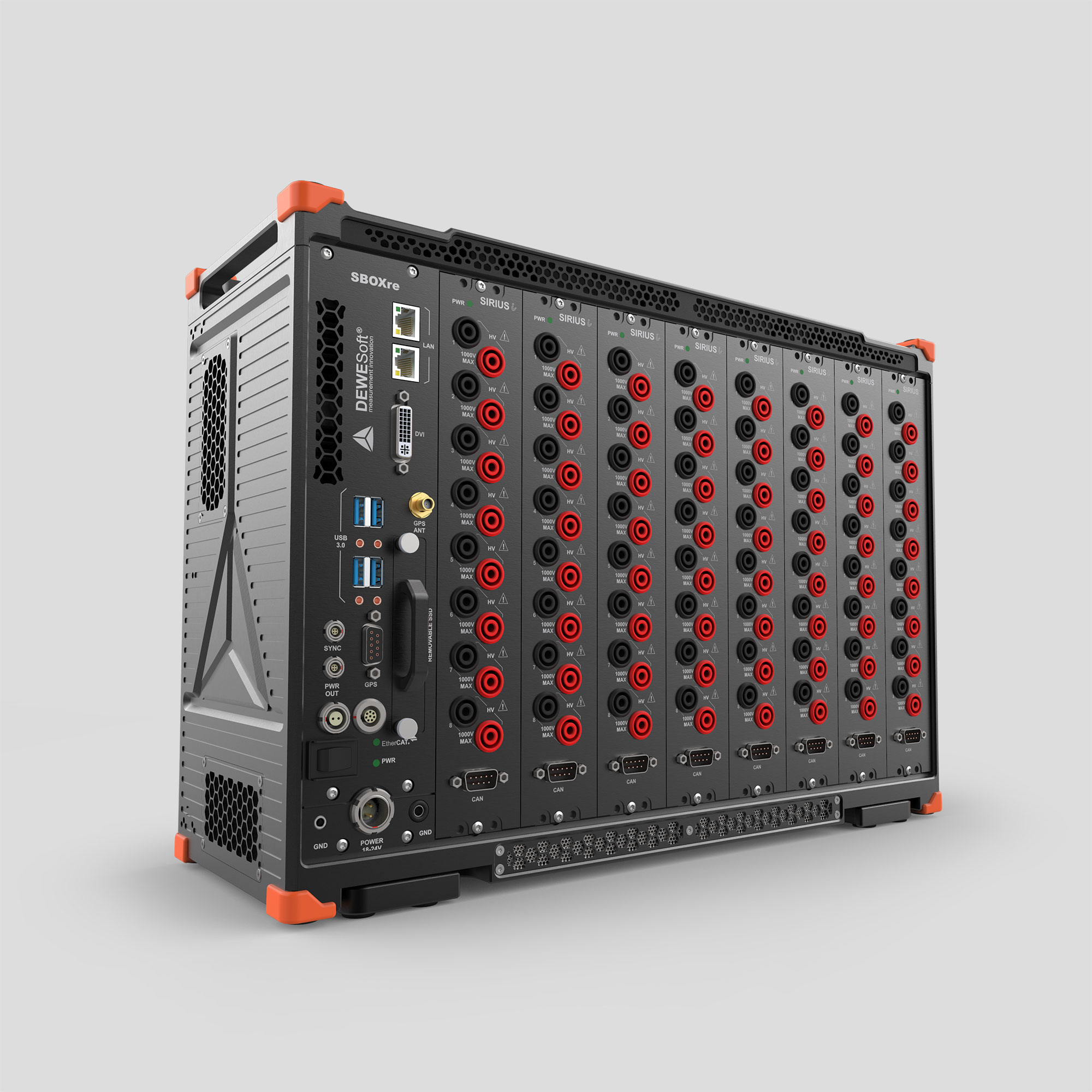 |
200 kS/s or 1 MS/s | 128 analog in 64 counters 184 digital 36 CAN bus 64 analog out |
High-channel count data acquisition system, configurable with up to 8 SIRIUS cards, a built-in computer, SSD storage, and high-quality signal conditioning. |
| SIRIUS R8DB | 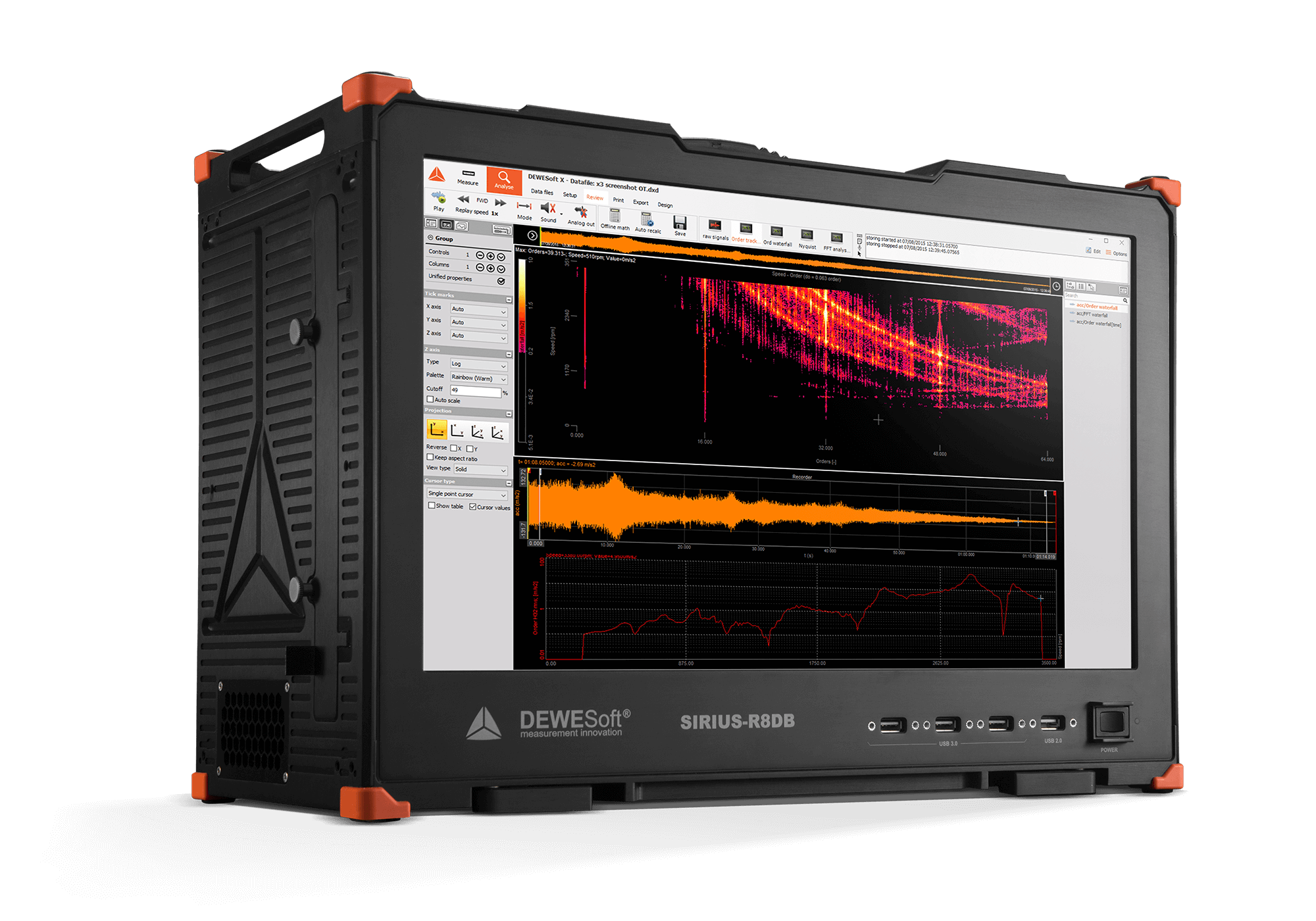 |
200 kS/s or 1 MS/s | 128 analog in 64 counters 184 digital 36 CAN bus |
Portable high-channel count display data acquisition system with a built-in computer, SSD storage, and batteries. Configurable with up to 8 SIRIUS signal conditioning cards. |
| OBSIDIAN | 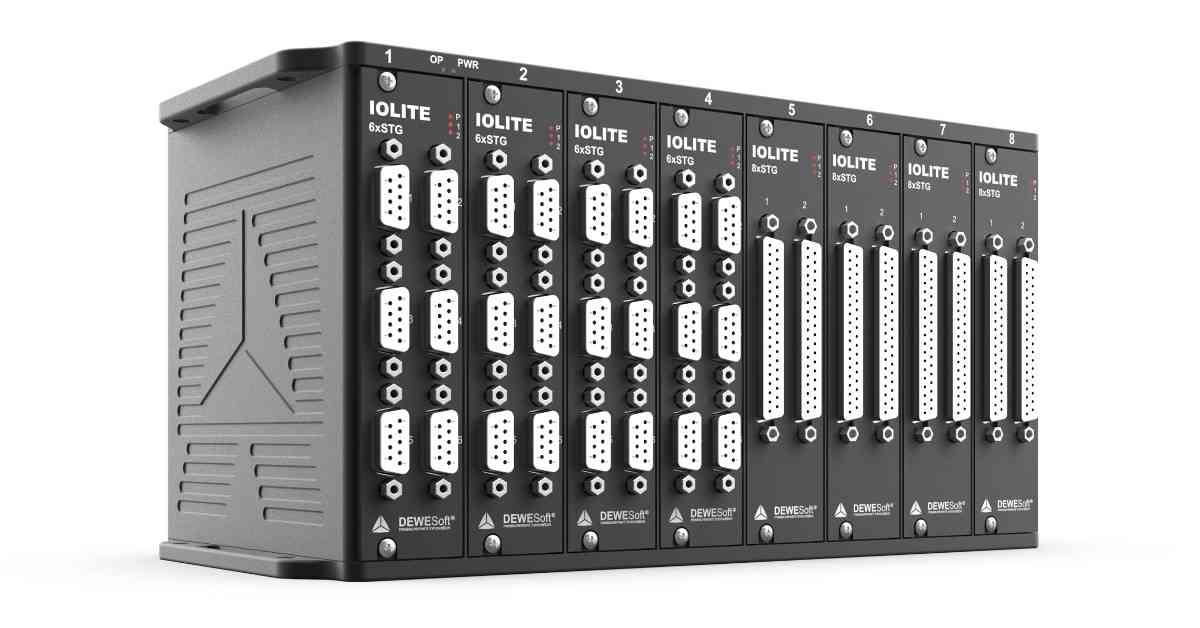 |
20 kS/s | Up to 8 IOLITE signal conditioning cards. | Embedded data logger with ARM CPU and internal storage for stand-alone operation. |
Rack-mounting data acquisition systems
When DAQ systems are going to be installed permanently, for example in a laboratory or test bench, it makes sense to put them in standard 19” rack enclosures. This provides physical protection for the system as well as the cables and is especially useful in high channel count applications.
Dewesoft makes several rack-mounting compatible DAQ systems:
| Series | Image | Top Sample Rate/ch | Max Channel Count | Features |
| IOLITE R12 |  |
40 kS/s | Up to 12 slots for analog, and digital I/O | Industrial EtherCAT-compatible data acquisition and control system. Dual EtherCAT data bus with real-time output capability. |
| SIRIUS R3 |  |
200 kS/s or 1 MS/s | 32 analog in 16 counters 48 digital 2 CAN bus |
Rack-mountable data acquisition system with built-in computer and storage. Configurable with up to 3 SIRIUS signal conditioning cards. |
| SIRIUS R8 | 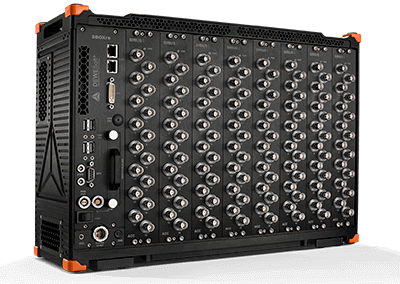 |
200 kS/s or 1 MS/s | 128 analog in 64 counters 184 digital 36 CAN bus 64 analog out |
High-channel count data acquisition system, configurable with up to 8 SIRIUS cards, a built-in computer, SSD storage, and high-quality signal conditioning. |
| SIRIUS R8rt | 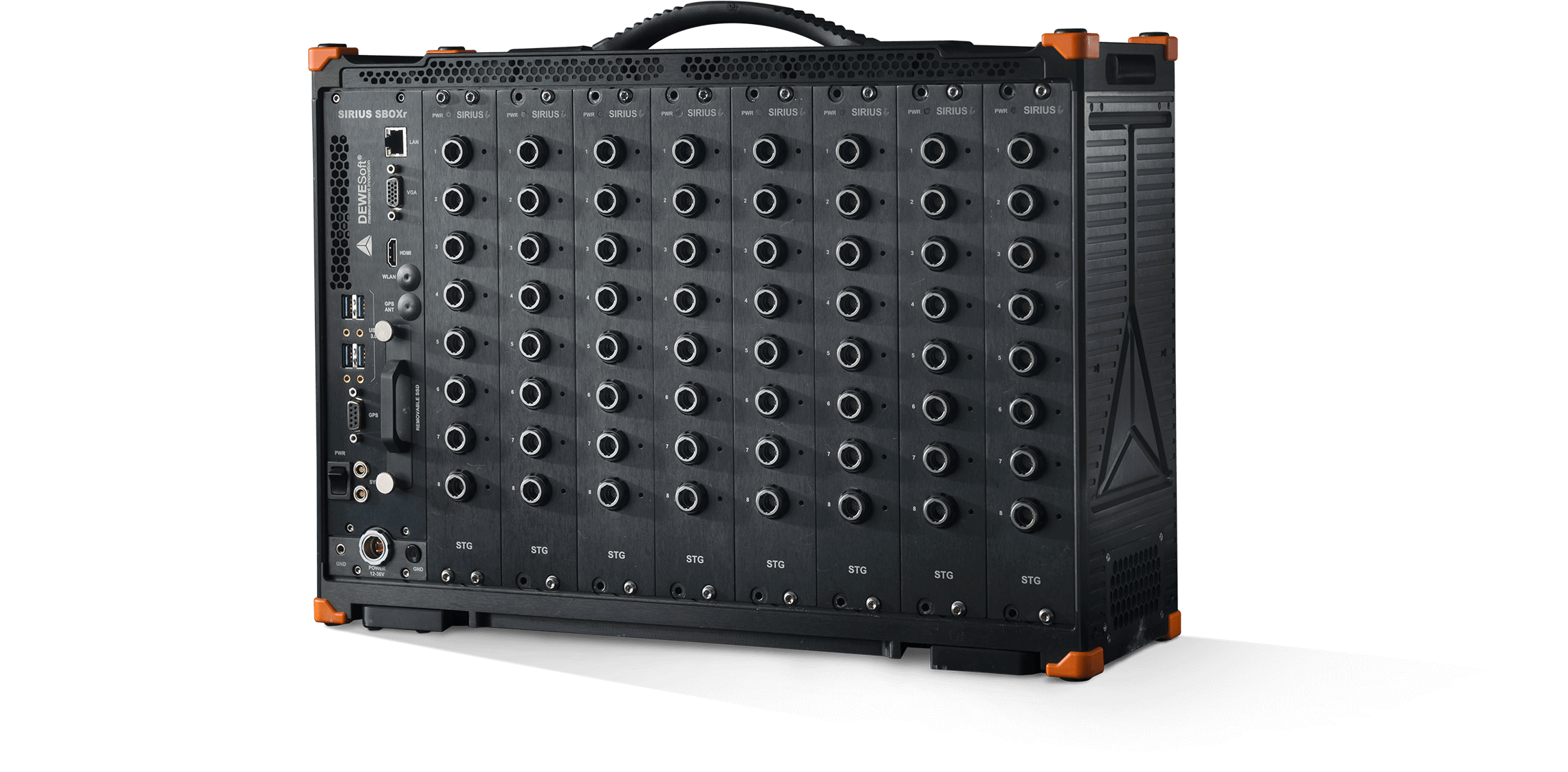 |
200 kS/s or 1 MS/s | 128 analog in 64 counters 184 digital 36 CAN bus 64 analog out |
Same as R8 with additional real-time EtherCAT output for feeding low-latency data to 3rd party controllers. |
Distributed data acquisition systems
What does “distributed” mean? Most engineers are familiar with the classic DAQ system that sits on a lab bench. But what about applications that have a wide array of measurement points located some distance from each other? In the past, these applications could only be handled by using multiple DAQ systems and then attempting to merge and synchronize their data together after the testing.
Today there is a new kind of DAQ system. A distributable data acquisition system capable of locating input modules all around a factory or other large area or structure. These DAQ systems are designed to have built-in synchronization across all of the measurement units and input channels. They digitize the signals right at the measuring points, sending back digital data to a central computer, EtherCAT master, or even a central database or cloud database.
The example photo below shows how data acquisition systems are distributed over a large area. This distribution of DAQ systems brings several advantages:
The single cable connects DAQ hardware units for power, synchronization, and data.
Sensor cable lengths are kept to a minimum since DAQ systems are placed close to them. This removes signal noise and improves signal quality overall.
Dewesoft offers several distributable data acquisition systems:
| Series | Image | Top Sample Rate/ch | Max Channel Count | Features |
| KRYPTON |  |
EtherCAT | 20 kS/s analog / 40 kS/s digital inputs | Rugged single-channel and multi-channel DAQ modules. For testing in an extreme environment. |
| SIRIUS |
|
USB 2.0 EtherCAT |
200 kS/s or 1 MS/s | Small, with top-performance signal conditioning, EtherCAT, and USB output. 8 or 16 channels per slice and 1 CAN bus input. |
| SIRIUS XHS |  |
USB 3.0 GLAN |
15 MS/s | High-speed and high-bandwidth DAQ system. Available in 8-channel configuration. |
| IOLITE modular |  |
EtherCAT | 40 kS/s | Tiny single- and multi-channel, distributable EtherCAT data acquisition modules for industrial use. |
Data acquisition systems by acquisition speed
Along with accuracy, sampling speed is one of the most important performance characteristics of any measuring system.
Included with all Dewesoft systems, DewesoftX DAQ software supports the full range of sample rates that the hardware allows, from extremely slow speed sampling in the range of minutes or even hours between samples), all the way up to 15 million samples per second (per channel!) with SIRIUS XHS DAQ modules.
Here is a top-level overview of Dewesoft DAQ systems by top acquisition speed:
| Slow to medium speed | Medium to fast speed | Fast speed | Very fast speed |
| Up to 20 kS/s | 20 kS/s - 200 kS/s | 200 kS/s - 1 MS/s | 1 MS/s - 15 MS/s |
| IOLITE modular IOLITE rack OBSIDIAN KRYPTON SIRIUS EtherCAT |
DEWE-43A MINITAURs SIRIUS SIRIUS R2/R4 SIRIUS R1DB/R2DB SIRIUS R3 SIRIUS R8 SIRIUS R8DB SIRIUS RT |
SIRIUS SIRIUS XHS SIRIUS R2/R4 SIRIUS R1DB/R2DB SIRIUS R3 SIRIUS R8 SIRIUS R8DB SIRIUS RT |
SIRIUS XHS |
Slow to medium DAQ systems
Slow to Medium systems (100 S/s to 20 kS/s) are typically found in:
Process control and machine monitoring applications
Real-time control, factory automation
Voltage and current monitoring, power plant tests, relay, and valve tests
General-purpose testing across every industry
Civil engineering, structural monitoring
Medium to fast DAQ systems
Medium to Fast systems (200 kS/s) are often found in:
Noise and vibration (NVH), modal tests, sine processing, structural analysis
The road load, combustion analysis, cold and hot weather, and vehicle tests of all kinds
Aerospace and military testing of engines, control surfaces, and wind tunnel tests
Electromotor tests, elevator
Fast DAQ systems
Fast systems (1 MS/s) are used for:
Dynamic shock, impact, and crash tests
Ballistics testing
Power analysis
Power quality analysis
E-mobility
Very fast DAQ systems
Very fast systems (15 MS/s) are used primarily for:
Transient capture applications
Impact and crash tests
Weapons testing
Power analysis
Power quality analysis
E-mobility
Data acquisition systems by environment protection or ruggedness (IP rating)
Rugged data acquisition systems are built to work in very harsh environments. The most important considerations include a wide operating temperature range, the ability to withstand high shock and vibration, and resistance to water, dust, smoke, ice, etc.
| Model | IP rating | Operating temperature | Shock rating |
| KRYPTON | IP67 | -40 to +85° C- | 100 g, 6 ms, half-sine |
| KRYPTON CPU | IP67 | -40 to 70° C | 100 g, 6 ms, half-sine |
| SIRIUS Waterproof | IP67 | -40 to +60° C | 100 g @ 4 ms 50x, half-sine, all axis |
| SBOX Waterproof | IP67 | -40 to 50° C | 100 g, 4 ms, half-sine 50x pos./neg in each axis |
| SIRIUS fanless | IP50 | -10 to 40 °C | Vibration sweep sinus (EN 60068-2-6:2008) Vibration random (EN 60721-3-2: 1997 - Class 2M2) Shock (EN 60068-2-27:2009) MIL-STD-810D |
| IOLITE R8R | IP50 | -10 to 50 °C (-40 to 85 °C optional) | Random: Profile breakpoints: 24 Hz - 0.04 g²/Hz 60 Hz - 0.5 g²/Hz 100 Hz - 0.5 g²/Hz 240 Hz - 0.01 g²/Hz 2 kHz - 0.01 g²/Hz Profile RMS / Peak = 15 g / 45 g 2 hrs in each axis, 6 hrs total |
Data acquisition systems with control capability
There is a whole new kind of DAQ system available from Dewesoft. So-called data acquisition and real-time control systems. These systems can be used in a real-time control system loop and offer high-speed buffered data acquisition and also stream-reduced data to any 3rd-party EtherCAT controllers with very small latency.
| Model | Streams data to EtherCAT master | Streams high-speed data via USB to the Dewesoft system | Module slots per chassis | Single and multi-channel modules | Dual data bus capability |
| IOLITE rack | Yes | Yes (to host PC) | R12 = 12 modules R8 = 8 modules R8R = 8 modules |
Multi-channel only | Yes |
| IOLITE modular | Yes | No | N/A (multi-channel modules are DIN rail mounted) | Yes | No |
| OBSIDIAN | Yes | Yes (to host PC or internal storage) | 8 modules | Multi-channel only | Yes |
| SIRIUS RT | Yes | Yes (integrated PC) | R8rt = 8 SIRIUS slices
R4rt = 4 SIRIUS slices |
Multi-channel only | Yes |
| SIRIUS EtherCAT | Yes | Yes (to host PC or internal storage) | Up to 8 or 16 analog channels per slice | Multi-channel only | Yes |
| KRYPTON | Yes | No | Up to 8 analog channels | Single and multi-channel modules | No |
